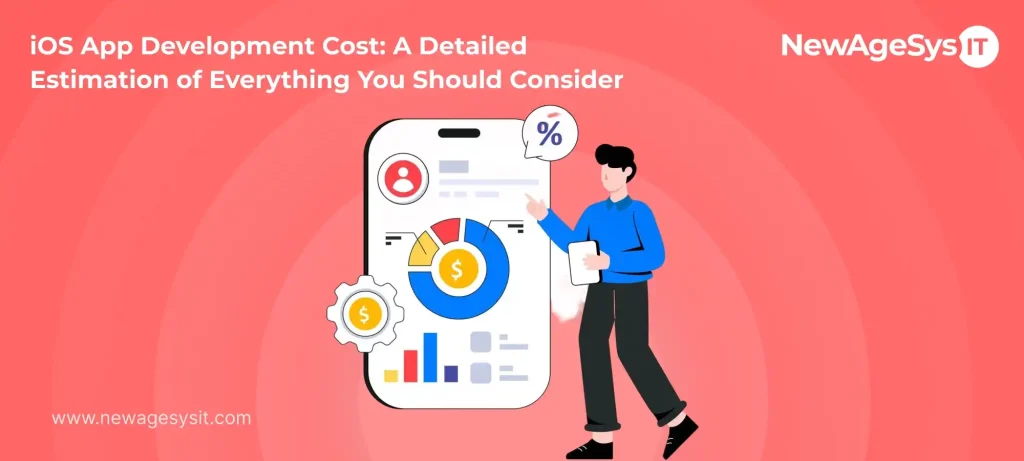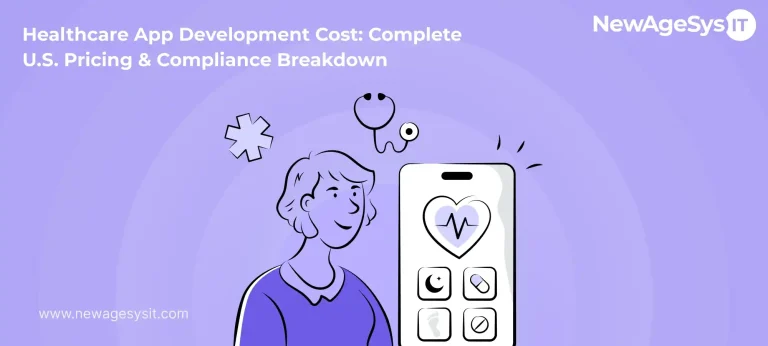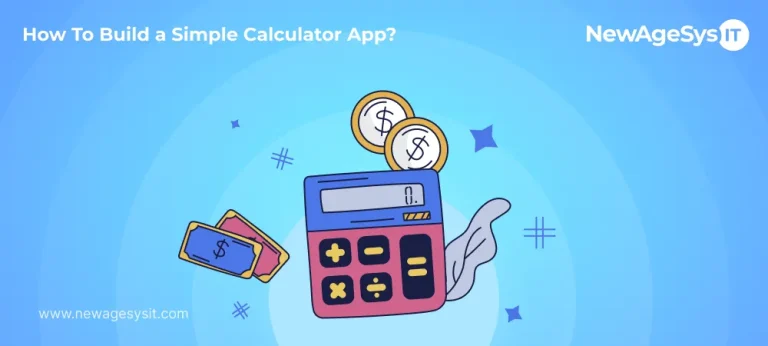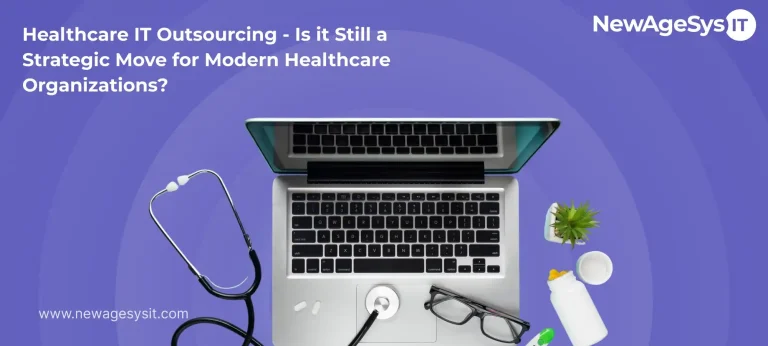| TL;DR iOS app development costs: iOS app development usually costs around $50,000-$700,000, based on factors such as team location, complexity, app features, scope of the project, etc. Factors affecting iOS app development costs: The major app development cost factors involve app size, UI/UX design, the physical location of the development team, API integrations, and app complexity. Hidden iOS app development costs: Hidden app development costs you should consider include the app maintenance fee, app store fees, and costs for updates and testing, which should be accounted for when planning the budget. The App Store generated $103.4 billion in revenue in 2024, compared to the revenue of $46.7 billion for Google Play, making it an ideal choice for businesses that focus on monetization. Tips to save on iOS app development costs: To optimize the budget, you can begin with an MVP, adopt agile methodologies, and leverage pre-built tools to save on costs and time. |
Choosing iOS as your ideal mobile app development approach is a thoughtful move. Once you decide to move forward with iOS app development, the next question would be: “How much does it cost to build an iOS app?”. The average cost of iOS app development can range between $50,000 and $700,000 or more, based on various factors.
Although iOS applications are considered costly than Android applications, there are many aspects that impact the final iOS app development cost. Be it app complexity, app category, or other factors, every aspect contributes to defining the iOS app cost. Certainly, you’ve landed upon this blog to find a precise figure on the iOS app development costs, so let’s dig deeper.
The present mobile app development market has turned highly saturated, leaving investors and stakeholders confused about the app they wish to build. Nevertheless, there are 1526 new apps on average launched on the App Store every single day. The Internet is also clogged with numerous cost estimates, which makes it even more difficult to determine the actual cost.
Fret not, our blog can save you from all these hurdles in determining the iOS app development cost. We can also make it easy to hire an iOS app development company that helps you build an iOS app cost-effectively. Further, you can also explore the hidden elements and backgrounds that increase the iOS app budget. Let’s get started.
Formula to Calculate the Estimated Cost of iOS App Development
Here is a formula you can use to break down the estimated or average iPhone app development cost:
{UI/UX design hours + platform-specific app development hours spent + backend server hours spent} * developers’ cost per hour
Additionally, by diving specifically into each element in the formula, you’ll learn various factors that can add to the total iOS app development cost.
iOS App Development Cost Breakdown: Key Factors to Consider
iPhone app development costs can differ based on a number of factors, including features, integrations, and overall design capabilities. For example, a simple app with basic features will be less expensive compared to a feature-rich app that demands specialized backend integration and custom designs. Also, the geographical location of the development team plays a crucial role, with the costs changing based on the region.
Understanding these cost drivers is essential to planning the iPhone app development cost budget efficiently. Breaking down development and understanding the significant costs lets you make better decisions that align with your financial capabilities. Be it a small-sized project or an enterprise solution, learning the potential costs beforehand can let you strategize and improve resource allocation. Let’s learn the iOS app development cost breakdown influenced by significant factors that together build an overall app budget.
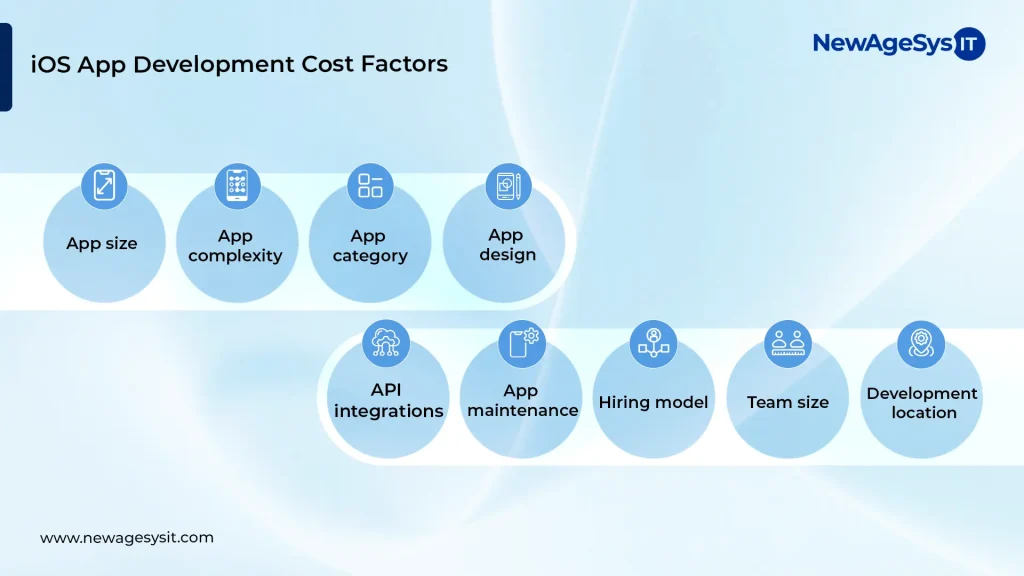
Factor 1: iOS App Size
The iOS app size directly affects the cost of iOS app development. Large-scale apps with additional content and features demand more development resources and time, which is why they cost more than usual apps. Meanwhile, smaller apps are cost-effective with limited functionalities. By balancing the functionalities according to the efficient coding practices, you can optimize the app size, which helps reduce iOS app expenses. Let’s take a look at the checklist that defines the generic iOS app development cost as per the app size.
| App Size | Development Time (Average) | Development Cost (Average) |
|---|---|---|
| Small | 2-4 months | 10,000 – 50,000+ USD |
| Medium | 4-8 months | 50,000 – 100,000+ USD |
| Complex | 8+ months | 700,000+ USD |
Factor 2: iOS App Features Complexity
The complexity of features significantly affects the app development costs. Generally, basic apps are less expensive as they deal with essential features in the development process. However, apps with complex or medium features need more resources and time, which can increase the total costs. Developers and stakeholders should understand the feature complexities as these would help them plan the budget more efficiently. Let’s dive into these in detail:
- Basic App Features
User Authentication: simple login and authentication feature.
User Interface (UI): simple yet intuitive UI with limited features
Core Functionality: basic features needed for app functionality, like display of information or executing simple tasks.
Database Integration: Integrating with a basic database to store and retrieve user-specific data.
Push Notifications: Basic push notification feature for updates and alerts.
- Medium App Features
Improved User Authentication: Advanced authentication methodologies such as biometric authentication or social media login.
Custom UI Elements: Custom UI design elements for increased user experience.
Additional Functionality: Mid-level features such as search functionality, in-app messaging, payment processing, etc.
Advanced Database Integration: Integration with modern databases to manage huge datasets or complex data relationships.
Analytics Integration: Analytics tools integrations to track user behaviour and app performance.
- Complex iOS App Features
Advanced User Authentication: User management features, Multi-factor authentication, and role-specific access controls.
Complex Functionality: Advanced features like real-time collaboration, ML capabilities, and AR (Augmented Reality).
Highly Custom UI/UX: Complex UI designs with gestures, animations, and interactive elements.
Backend Integration: Integrating with complex backend systems or APIs to ensure data synchronization and logic implementation for business.
Latest Security Measures: High-end security features such as secure data storage and industry compliance.
| App Complexity | Key Features | Cost (Average) |
|---|---|---|
| Basic | 2-4 months | 10,000 – 50,000+ USD |
| Medium-level | 4-8 months | 50,000 – 100,000 USD |
| Complex | 8+ months | 100,000+ USD |
Factor 3: iOS App Categories
iOS app development cost varies across several categories. Each mobile app category has its version of complexity, functionality, and UX requirements. For example, applications with the latest features, including e-commerce or gaming, cost more as they are complex and involve more time for testing, development, etc. On the contrary, utility apps with fewer functionalities cost less. Additionally, factors like compliance with industry standards, third-party integrations, and expertise can further affect the total cost of app development in various categories. Here’s a breakdown of iOS app development costs based on various categories.
| App Category | Development Time (Average) | Development Cost (Average) |
|---|---|---|
| Gaming & Entertainment | 5- 20 months | 30,000 – 250,000+ USD |
| Business | 2-10 months | 5,000 – 150,000+ USD |
| Education & Learning | 2-12 months | 10,000- 80,000+ USD |
| Travel | 2-8 months | 5,000 – 50,000+ USD |
| Retail & Shopping | 3-8 months | 5,000 – 50,000+ USD |
| Social Networking App | 5-8 months | 10,000 – 60,000+ USD |
| Health & Fitness | 2-15 months | 10,000 – 250,000+ USD |
| Medical & Healthcare | 2-8 months | 30,000 – 90,000+ USD |
Factor 4: iOS App Design
iOS app design accounts for a significant portion of app development costs, with factors contributing to the total expenses. Generally, complex designs, such as custom animations, user interfaces, and high-resolution graphics, demand increased costs as they require additional resources and time for greater execution. Meanwhile, it might demand multiple screen resolutions/ screen sizes to make it compatible across different iOS devices. Adhering to Apple’s design guidelines and integrating interactive elements can add to the app design costs. Nevertheless, the overall design increases as you include user feedback and perform design iterations to enhance UI/UX. Let’s check the cost breakdown of iOS app development based on the various phases of the design process:
| Design Process | Costs (in USD) |
|---|---|
| App design research | 100 – 500 USD |
| UX design | 2000 – 10,000 USD |
| UI design | 10,000 – 40,000 USD |
| Branding | 5,000 – 20,000 USD |
| Animation & illustration | 1000 – 25,000 USD |
Factor 5: API Integrations
API integration is an integral part of app development and affects costs. The number of APIs required and the complexities, together with customization, can impact the overall expenses. Using multiple modern APIs can increase development costs. Nevertheless, the factors such as API documentation and continuous support add to the final cost. In this scenario, you can think of hiring a mobile app development company, as their expertise in managing advanced APIs and offering continuous support can largely influence the development costs.
Payment Integration
Payment gateway integration is an important factor for apps, where their costs rely on factors like service provider, security requirements, and transaction volume. Customizing payment processes and aligning with industry standards, such as PCI DSS, can increase costs. Continuous maintenance and support also add to the app development costs.
Let’s take a look at the popular payment integration APIs in the table below:
| Payment Gateways | Transactional Costs | Monthly Fees |
|---|---|---|
| PayPal | 2.90% + 0.30 USD / transaction | None |
| Stripe | 2.90% + 0.30 USD / transaction | None |
| Authorize.net | 2.90% + 0.30 USD / transaction | $25 |
| Braintree | 2.90% + 0.30 USD / transaction (no fees applicable for the first processed $5000) | None |
| Apple Pay | 1% + 0.25-10$ for instant transfer | None |
Note: Rates may slightly change based on region, volume, or custom agreements with providers. Keep a note of the official site for the latest pricing.
Third-Party Integration
Integrating external services such as mapping tools or social media login information into the application demands third-party integration. Costs can change based on factors like customization needs, complexity of integration, etc. Additionally, usage-specific pricing, licensing costs, and continuous support can affect the expenses. With careful consideration and selection of reliable services, you can efficiently manage the integration costs. Let’s take a deeper look at the well-known third-party API integrations used and their respective cost breakdown analyses.
| Third-Party Integration | Key Features | Average Integration Costs |
|---|---|---|
| Google Maps | Navigation /Geolocation Access | 200 USD |
| Facebook APIs | Authentication, Authorization | 200 USD |
| Skyscanner API | Provide flight search, live travel quotes, and ticket costs | 100 USD |
| Movie Database API | To access runtime, IMDB rating, awards, release date, etc. | 600 USD |
| Booking API | To access costs, facilities, and accommodation queries | 800 USD |
Factor 6: Hiring Model
The hiring approach has a considerable impact on the project’s overall cost. Each option has its own advantages and disadvantages, irrespective of hiring in-house developers, freelancers, outsourcing, or offshore firms. By analyzing the project’s scope, budget, complexity, timeline, skill sets, etc, the decision can be taken critically.
- In-House App Developers
The hiring process of in-house iOS developers gives control and paves the way for direct collaboration. But, this can be highly expensive due to factors like salary, overhead expenses, and benefits. This model suits long-term projects or ongoing support needs. The usual cost of an in-house team could be about $100,000 – $120,000 or more per annum.
- Freelance App Developers
Freelance developers are flexible and cost-effective. They are suitable for smaller or specific projects/tasks. They usually charge per project or per hour, but the reliability and quality control pose a major challenge. The usual hourly charges of freelancers can be in the range of $34 to $79, or more, based on the complexity of the project.
- Outsource to an Offshore App Development Company
By outsourcing to offshore companies, you can optimize cost and quality. They have access to better talent and reduced labor costs, while providing competitive pricing. Offshore outsourcing can cost about $45 or more, and this is usually a simple process. That said, the communication hurdles like cultural differences and time zones might need careful consideration to ensure smoother collaboration.
Factor 7: Team Size
This factor is crucial in deciding the iOS app development cost. A bigger team usually contributes to more costs as it demands more resources to coordinate. Aspects such as the app’s timeline and app complexity can also impact the team size. Though the small-sized team can save costs, it can delay development. On the contrary, a larger team can accelerate the process, but at a higher expense. Hence, you need to hit the right balance for efficient cost management. Let’s look at the individual cost of every resource you require for iOS app development.
| Job Role | Hourly Rate |
|---|---|
| iOS Developer | 20 – 100+ USD |
| UI/UX Designer | 15 – 50+ USD |
| Scrum Master | 60 – 160+ USD |
| QA Engineer | 15 – 40+ USD |
| Business Analyst | 50 – 70+ USD |
| Project Manager | 60 – 180+ USD |
Factor 8: Location of the Development Team
The developers’ location impacts the cost of building an iOS app. The costs can vary based on factors like talent availability, labor costs, etc. For example, hiring teams in areas like Western Europe or North America can imply that the costs are more due to the high living costs. On the contrary, outsourcing to places like Eastern Europe or India with reduced labor costs could be cost-effective. Also, the proximity of the team to the client is an important factor; local teams could cost more but offer greater collaboration. Meanwhile, nearshore or offshore options could save on costs but demand good communication.
| Region | Cost Per Hour |
|---|---|
| India | 20 – 50+ USD |
| U.S. | 100 – 180+ USD |
| Ukraine | 30 – 100+ USD |
| Australia | 90 – 170+ USD |
| Russia | 50 – 120+ USD |
| Eastern Europe | 40 – 90+ USD |
Factor 9: App Testing
Testing is an inevitable part of iOS app development to make sure it aligns with quality standards. It includes considering various app development aspects such as functionality, features, UI/UX design, compatibility, performance, security measures, etc. For this use, it needs specialized methodologies and tools to understand and resolve any concerns to ensure optimal performance. With detailed testing, you can enhance the app quality and reliability, hence improving the overall user experience. This is why iOS app testing has a significant share in determining the iOS app development cost. Look at the table below to understand the costs involved in this phase.
| Testing Type | Average Time for App Testing (hours=h) | Costs (Estimated) |
|---|---|---|
| UX Testing | 10h – 60h | 250 – 1500+ USD |
| Functional Testing | 50h – 200h | 750 – 3500+ USD |
| Performance Testing | 10h – 30h | 150 – 500+ USD |
| Security Testing | 50h – 120h | 800 – 2500+ USD |
| Platform & Device Testing | 10h – 25h | 100 – 200 USD |
iPhone App Development Cost: What are the Hidden Costs Involved?
When not appropriately managed, iOS app development costs can become highly expensive. The hidden iOS app development costs can emerge from possible differences in the legal expenses, compliance costs, project scope, or the quality assurance process.
It is important to learn about the hidden costs of iOS app development to eliminate budget overruns. The processes, including third-party API integration and post-launch support, can also contribute to the hidden costs. Continuous maintenance and changes can also impact the overall app development cost. Adopting proactive efforts can help you keep the budget ideal and manage the hidden costs involved.
App Store Fees and Regulations
App launch on the App Store can have its expenses and regulations. The yearly cost of developer account maintenance is nearly $99, making it great for app submission. Nevertheless, apps that offer in-app purchases should count as a 15% commission rate applicable to the transactions. Adhering to the App Store guidelines is essential to eliminate possible delays or rejections during the app submission. Developers should comply with the guidelines and offer the necessary documentation for the review. The regulations can add to the total app development cost while ensuring a great user experience.
Maintenance & Updates
App launch and maintenance can impact the overall budget. As a post-development process, maintenance and updates are the continuous costs that should be prepared for post-app launch. Managing the app’s functionality and updating it with continuous performance improvements lays the foundation for user retention. Active support and maintenance are the cornerstone for addressing user feedback and unexpected changes/updates after app launch. With consistent updates and improvements, you can keep the app updated and ready for the market.
iOS App Development Vs Android App Development: Which is Better & Why?
What are the benefits of iOS app development over Android? Here’s a turn towards the advantages of iOS app development compared to Android:
- App Revenue:
App store outpaces Google Play Store in terms of revenue, making it $103.4 bn in 2024, compared to the revenue of $46.7 bn for Google Play. Another report states that iOS was responsible for about 68% of the total app consumer spending in the same year. The report also says that the subscription revenues have increased to almost $66.8 bn by 2024, out of which 73% of the revenue share was of iOS.
- Enterprise Data Security:
iOS app development ensures full-fledged data authorization and IT security. Being an ideal choice business apps can pick, iOS ensures centralized administration with control over other connected iOS devices. Moreover, it helps enterprises to follow BYOD (Bring Your Own Devices) and utilize advanced mobile management tools.
- Top-Notch Quality:
When compared to the Google Play Store, the App Store adopts a stringent app scanning procedure before the app is launched. This doesn’t only imply the quality and app standardization, but also helps to create an exceptional user experience alongside a positive user response.
- Reaches a Technically Sound Audience:
iOS app development helps with reaching a technically sound base audience. By formalizing an ecosystem to suit the users who emphasize app reliability and quality, Apple helps users stay engaged and willing to pay for superior experiences. It gives iOS app development companies the opportunity to build futuristic apps with the latest features, knowing they will be highly perceived by iOS users.
- Low Fragmentation
One of the most innovative features that differentiates iOS and Android is that they have a closed ecosystem. Mobile app development for iPhone is limited to a limited number of devices. Subsequently, it helps QA testers and iOS developers analyze app performance and credibility on devices such as iPhones and iPads. iOS app development offers various advantages, with a cost-effective market to invest in, compared to Android. This brings numerous business opportunities for entrepreneurs.
Looking Beyond iOS: Cost Insights Across Mobile Platforms
If you’re weighing iOS against Android, it’s helpful to look at mobile app development from a wider angle. Many businesses explore both platforms—or even cross-platform development—to maximize reach and value. Curious about how costs compare for different approaches? Check out our mobile app development cost guide for a quick overview of options and pricing.
Best Tips to Optimize Your iOS App Development Budget
iOS app development budget optimization demands high-level decision-making and thoughtful planning. Accurate cost estimation helps to make planning effective for development, marketing, and maintenance. Emphasizing core features and utilizing pre-built tools eventually minimizes the development costs. Laying out clear objectives and leveraging agile development methodologies improves resource management and helps detect issues prior. MVP (Minimum Viable Product) implementation helps in gathering user feedback prior, which helps minimize unwanted future expenses.
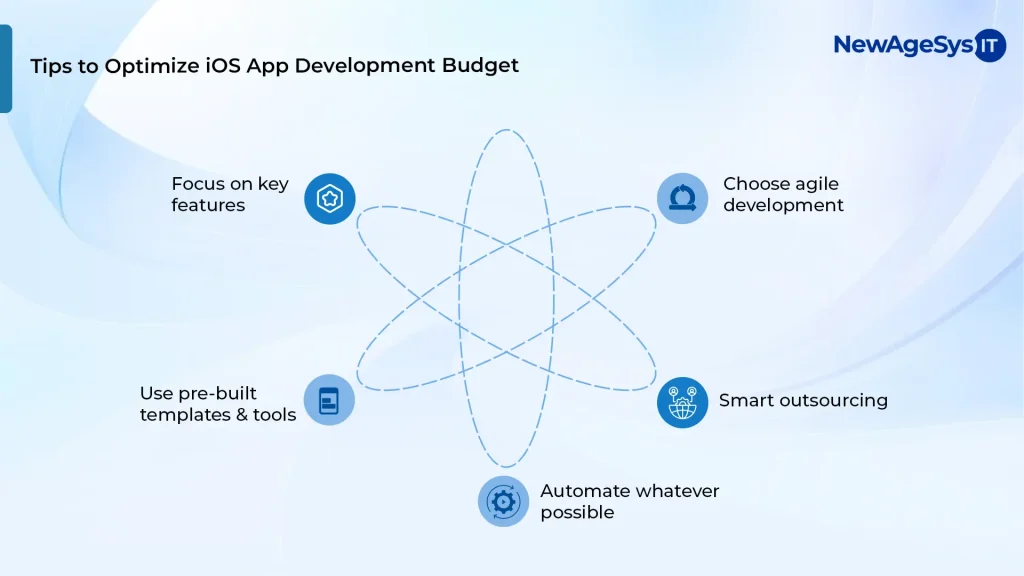
Focus on Key Features
You can keep an eye on what is essential to ensure faster time-to-market and speed up the development. This methodology lets developers deploy updates and new features quickly, enabling ongoing development and improving user engagement. With a strategic approach of planning additional features in future updates, you can scale the user experience without making the initial release cumbersome. The approach helps in cost management and also ensures that the app meets the major necessities of the users right from the outset.
Use Pre-Built Tools & Templates
With these in place, you can streamline the iOS app development process. This structure saves time and resources, helping in immediate launches and minimizing overall budgets. The most common tech tools developers use to create efficient iOS applications include React Native, SwiftUI, Flutter, etc.
Go For Agile Development
As they enhance responsiveness to changes, the agile practices consider users’ needs for development, ensuring that the critical features are delivered first. With agile methodology, you can enable rapid feedback cycles, reducing development time and costs through early issue detection. This enhances team collaboration, scales communication, and improves app quality.
How Can NewAgeSysIT Assist with Your iOS App Development?
Understanding iOS app development costs helps to make budget planning and project execution effective. Each factor, ranging from app features, functionality, size, design, choice of development team, and hidden costs, helps to determine the final app cost. By considering the essential features, using pre-built templates, and using agile practices, you can ensure a streamlined project journey and manage the development budget.
NewAgeSysIT is a reputed iOS app development company, offering custom iOS app development solutions across different industries. With advanced technologies and digital transformation, we streamline iOS app development and help with effective cost management. By partnering with NewAgeSysIT, you can gain access to an expert team of iOS app developers, dedicated to building custom applications for iOS devices (iPhone, iPad, Apple Watch, Apple TV).
Whether you need an iOS application for video streaming, route matching, geo-tagging, or real-time analytics, we have experts to turn your vision into life. Partner with NewAgeSysIT to streamline your iOS app development, for custom solutions and for services that use advanced technologies to bring app ideas to life.
FAQ
1. What impacts the iOS mobile application development costs?
iOS app development costs revolve around factors including features, app complexity, design standards, development timeline, and the integration requirements. Choosing a tech stack and the need for ongoing maintenance can also impact the final cost.
2. How can I estimate the iPhone app development cost?
You can estimate the app development costs by defining the application’s features, scope, and design expectations, and then having a detailed quote from the expert iOS app development company. This gives an exact projection according to the unique business needs.
3. What is the difference between developing apps for iOS and Android?
iOS app development focuses on Apple devices and uses Objective-C or Swift. It involves reduced testing cycles due to fewer device variations. Android development includes more devices but needs added optimization for various OS versions or screen sizes.
4. Why build iOS apps for business?
iOS apps provide a high-end user experience, greater security, and accessibility to a greater user base. These are the best to serve businesses that target premium markets and seek to enhance the brand’s credibility.
5. How much does it cost to build an iOS app?
iOS app development cost can range from a few thousand dollars to maybe hundreds of thousands of dollars, based on the features, complexities, and app integrations. To get an accurate estimate from an iOS app development company, you can reach out to us.
5. How to develop an iPhone app?
The process ranges from UI/UX design, planning, and development (Objective-C or Swift-based), and App Store deployment. Partnering with a reliable iOS app development team helps to ensure a highly efficient and smooth build from ideation to the app launch.

